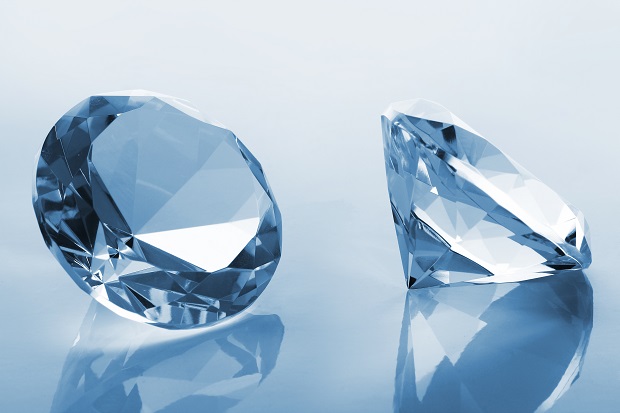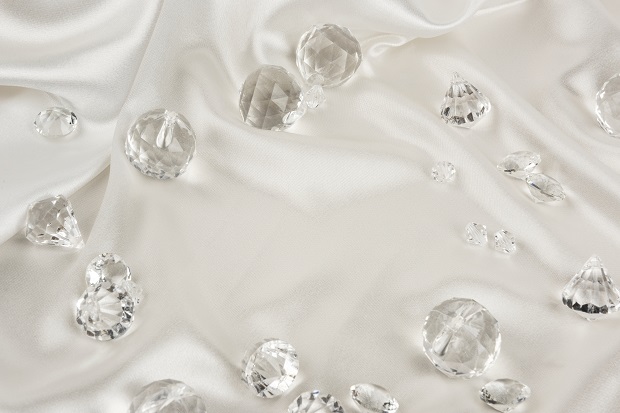
For centuries, diamonds have been revered as timeless emblems of affection, elegance, and opulence. However, the traditional process of mining natural diamonds has raised concerns about its environmental impact. Fortunately, technological developments have led to the development of lab-grown diamonds, which present a more environmentally friendly option to their mined counterparts. In this post, we’ll examine the advantages of lab-grown diamonds for the environment and how they help us leave a smaller carbon footprint.
It’s crucial to know what lab-grown diamonds are before we discuss their benefits. Lab grown diamonds, also known as synthetic or cultured diamonds, are created in a controlled laboratory environment that replicates the natural conditions under which diamonds form in the Earth’s crust. These diamonds are physically and optically identical to natural diamonds because they share the same physical and chemical characteristics.
Minimal Environmental Impact
Lab-grown diamonds offer notable eco-friendly advantages due to their minimal environmental impact. Unlike conventional diamond mining methods, which necessitate extensive extraction of earth and rock, lab-grown diamonds are created using significantly fewer resources and energy. This reduced resource consumption directly translates into a lower carbon footprint, as the energy requirements for mining and transportation are entirely eliminated.
Furthermore, the production of lab-grown diamonds does not involve detrimental practices such as deforestation, habitat destruction, or the release of harmful chemicals into ecosystems. The avoidance of these destructive activities contributes to the preservation of natural habitats and biodiversity.
Ethical and Social Sustainability
Another advantage of lab-grown diamonds is their ethical and social sustainability. The process of mining natural diamonds has been associated with human rights violations, including forced labor and child labor in certain regions. By choosing lab-grown diamonds, consumers can be confident that their purchase does not contribute to these unethical practices. Lab-grown diamonds are produced in a controlled environment, ensuring fair labor practices and adherence to international regulations.
Traceability and Transparency
Lab-grown diamonds also offer traceability and transparency, which is increasingly important to conscious consumers. Mined diamonds often go through a complex supply chain, making it difficult to trace their origins and ensure they are conflict-free. On the other hand, lab-grown diamonds can be easily tracked from the moment they are created, providing a transparent and accountable supply chain.
This traceability gives consumers peace of mind, knowing that their diamonds were produced in an environmentally responsible and socially ethical manner. They can access information about the origin, production process, and certifications of their lab-grown diamonds, enabling them to make informed purchasing decisions. This transparency aligns with the growing demand for ethically sourced products and empowers consumers to support sustainable practices. With lab-grown diamonds, conscious consumers can enjoy the beauty of a sparkling gemstone while contributing to a more transparent and responsible diamond industry.
Accessibility and Affordability
On the other hand, lab-grown diamonds provide a more reasonably priced and widely available option without sacrificing quality. This control has led to price manipulation and artificially inflated prices. Lab-grown diamonds, on the other hand, offer a more affordable and accessible option without compromising on quality. This accessibility allows more people to enjoy the beauty of diamonds without the exorbitant price tag, democratizing the diamond industry.
Aesthetic Advantages
In addition to the environmental and social benefits, lab-grown diamonds also offer aesthetic advantages. These diamonds exhibit the same brilliance, clarity, and fire as natural diamonds, captivating the eye with their stunning beauty. Their optical properties are indistinguishable from those of mined diamonds, ensuring that they sparkle and shine just as brilliantly. Furthermore, consumers have more design flexibility and customisation possibilities thanks to the large variety of sizes, shapes, and colors available in lab-grown diamonds. Whether someone desires a classic round brilliant cut or a unique fancy color diamond, lab-grown diamonds can fulfill their vision. From engagement rings to pendants and earrings, lab-grown diamonds provide an exquisite and sustainable choice for jewelry that seamlessly combines ethical values with breathtaking aesthetics.
Durability and Longevity
Even with all the advantages, some customers could still be unsure of the robustness and lifetime of lab-grown diamonds. However, research has revealed that these diamonds are equally strong and resilient as their mined counterparts. They are subjected to the same rigorous quality standards and certifications, ensuring their strength and resilience. In fact, some lab-grown diamond manufacturers offer warranties and guarantees that are comparable to those provided for natural diamonds.
Lab-grown diamonds are produced using cutting-edge methods and technologies, producing excellent stones that can resist normal wear and tear. These diamonds share the same fundamental qualities and features as natural diamonds since they are chemically identical to them. Therefore, consumers can have confidence in the durability and longevity of lab-grown diamonds, knowing that they are investing in a lasting and reliable gemstone.
Final Thoughts
Embracing sustainability and ethical practices, lab-grown diamonds present a responsible and conscientious substitute for conventionally extracted gems. Their minimal impact on the environment, absence of unethical practices, traceability, affordability, and aesthetic appeal make them an attractive choice for environmentally conscious consumers. By opting for lab-grown diamonds, individuals can reduce their carbon footprint and contribute to a more sustainable and responsible diamond industry.





















